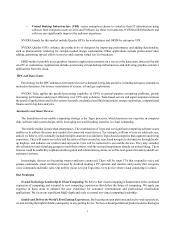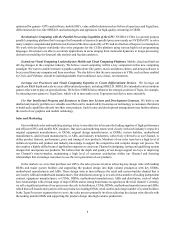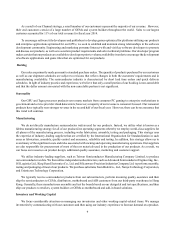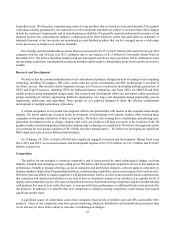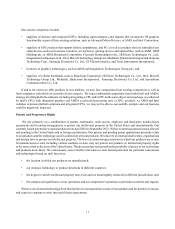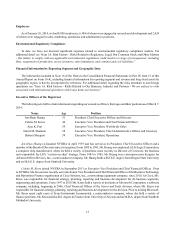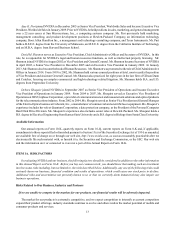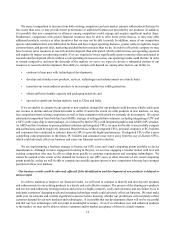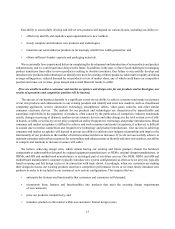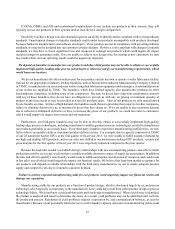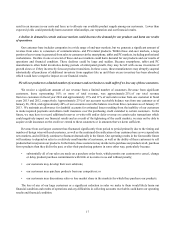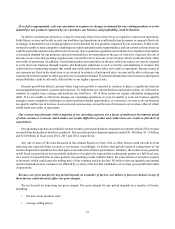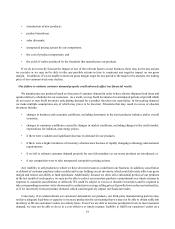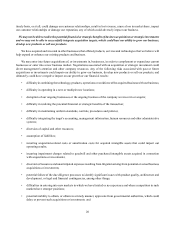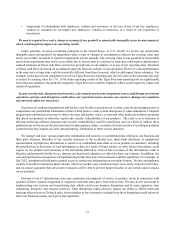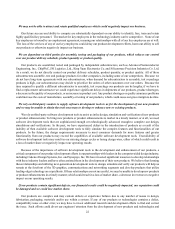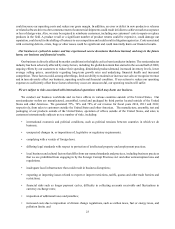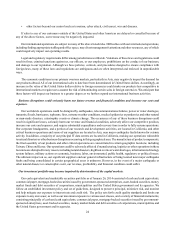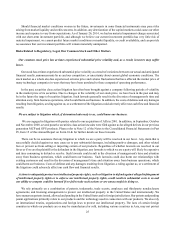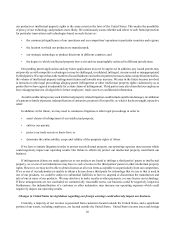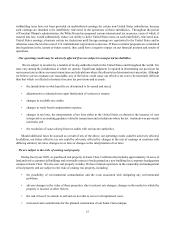NVIDIA 2013 Annual Report Download - page 161
Download and view the complete annual report
Please find page 161 of the 2013 NVIDIA annual report below. You can navigate through the pages in the report by either clicking on the pages listed below, or by using the keyword search tool below to find specific information within the annual report.17
result in an increase in our costs and force us to allocate our available product supply among our customers. Lower than
expected yields could potentially harm customer relationships, our reputation and our financial results.
A decline in demand in certain end-user markets could decrease the demand for our products and harm our results
of operations.
Our customer base includes companies in a wide range of end-user markets, but we generate a significant amount of
revenue from sales to consumers of communications- and PC-related products. Within these end-user markets, a large
portion of our revenue is generated from sales to consumers in the smartphone, tablet and PC markets, including professional
workstations. Decline in one or several of these end-user markets could harm demand for our products and our results of
operations and financial condition. These declines could be large and sudden. Because smartphone, tablet and PC
manufacturers often build inventories during periods of anticipated growth, they may be left with excess inventories if
growth slows or if they incorrectly forecast product transitions. In these cases, these manufacturers may abruptly suspend
substantially all purchases of additional inventory from suppliers like us until their excess inventory has been absorbed,
which would have a negative impact on our financial results.
We sell our products to a limited number of customers and our business could suffer if we lose any of these customers.
We receive a significant amount of our revenue from a limited number of customers. Revenue from significant
customers, those representing 10% or more of total revenue, was approximately 21% of our total revenue
from two customers in fiscal year 2014 and approximately 13% and 11% of our total revenue from one customer in fiscal
years 2013 and 2012, respectively. Approximately 23% of our accounts receivable balance was from one customer as of
January 26, 2014, and approximately 40% of our accounts receivable balance was from three customers as of January 27,
2013. We maintain an allowance for doubtful accounts for estimated losses resulting from the inability of our customers
to make required payments and obtain credit insurance over the purchasing credit extended to certain customers. In the
future, we may have to record additional reserves or write-offs and/or defer revenue on certain sales transactions which
could negatively impact our financial results and as a result of the tightening of the credit markets, we may not be able to
acquire credit insurance on the credit we extend to these customers or in amounts that we deem sufficient.
Revenue from our largest customer has fluctuated significantly from period to period primarily due to the timing and
number of design wins with each customer, as well as the continued diversification of our customer base as we expand into
new markets, and will likely continue to fluctuate dramatically in the future. Our operating results in the foreseeable future
will continue to depend on sales to a relatively small number of customers, as well as the ability of these customers to sell
products that incorporate our products. In the future, these customers may decide not to purchase our products at all, purchase
fewer products than they did in the past, or alter their purchasing patterns in some other way, particularly because:
• substantially all of our sales are made on a purchase order basis, which permits our customers to cancel, change
or delay product purchase commitments with little or no notice to us and without penalty;
• our customers may develop their own solutions;
• our customers may purchase products from our competitors; or
• our customers may discontinue sales or lose market share in the markets for which they purchase our products.
The loss of any of our large customers or a significant reduction in sales we make to them would likely harm our
financial condition and results of operations and any difficulties in collecting accounts receivable could harm our operating
results and financial condition.


